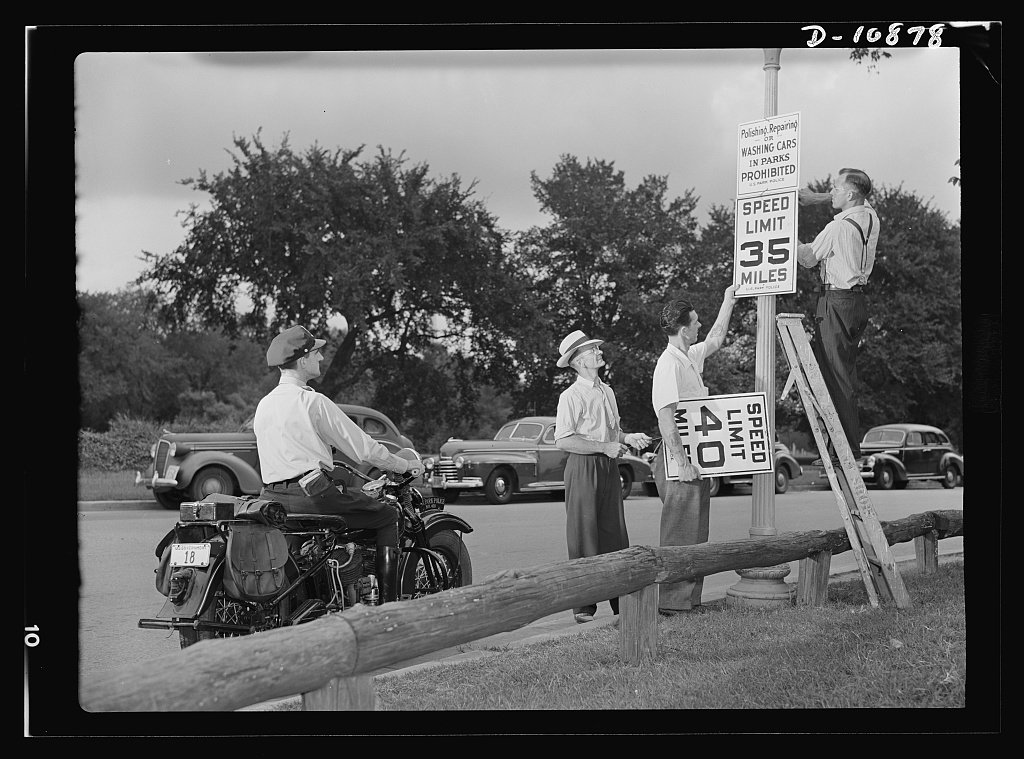Sixty years ago, highway billboards warned drivers to “Slow Down and Live” because, “Speed Kills”. Back then, for safety reasons, it was common to have reduced speed limits for trucks and reduced speed limits at night for all vehicles.
In the 1970s, during the energy crisis, to decrease the consumption of fuel, the maximum speed limit in the USA was lowered to 55 miles per hour (mph) [88.5 kilometres per hour (kph)]. During that period, not only was the consumption of fuel decreased, traffic accidents and deaths on highways also drastically declined.
Reducing highway speed limits from 60 mph to 35 mph, doubles the life expectancy of tires and reduces fuel consumption. Because of this, during World War 2, the maximum speed limit on USA highways was reduced to 35 mph (56 kph). Immediately, in the USA, deaths due to vehicle accidents fell by over 60 percent. Imagine driving across the USA at 35 mph. This would be a pleasant change; one would be able to enjoy a Sunday drive in the country without the fear of a deadly vehicle accident.

Today, despite our obsession with “Global Warming”, people are asking for higher speed limits which result in greater fuel consumption. With greater speeds we also have more injuries and deaths on the highways. Yet, most people will habitually drive 10 percent over the posted speed limit even though speed limits for cars and trucks have risen over the years to as high as 75 mph [121 kph].
Researchers at Cambridge University have shown that even little imperfections in the pavement result in much greater damage to roads, as well as to vehicles. This damage increases exponentially as speeds increase. Larger imperfections may show a 1,000 percent increase in damage to the roads with only a 100 percent increase in speed. A large truck on the highway, travelling at a good speed, may literally fly off the road when it hits an imperfection on the pavement. When the truck falls back down to the pavement, its tires act like heavy rubber mallets beating on the road.
Travelling on the Winnipeg Perimeter Highway one may experience a washboard type of surface while approaching a traffic light. This damage is caused by large, heavily loaded trucks, which will literally bounce along the road when drivers slam on the brakes while trying to stop for a red light which they were not prepared for. To prevent this, speeds have been reduced from 100 kph to 80 kph when a traffic light is just ahead. Most drivers do not reduce their speed. Many will try to sail through the intersection at 110 kph.
While standing on one of the Perimeter Highway overpasses, despite the gust of wind generated by a fully loaded gravel truck flying by, one may feel the bridge literally vibrate as the truck passes. Can we deny these trucks are causing serious damage to the pavement?
Common sense tells us, if speed limits on the Perimeter Highway are reduced, there would be a savings on fuel, less damage to the roads, less wear and tear on vehicles, and fewer accidents. Why do we not do this? Are we really concerned about safety and “Global Warming”, or do we just give lip-service? What if the maximum speed limit is reduced to 55 kph? How many billions of dollars, how much fuel, and how many lives, would be saved?
Semi-drivers are paid by the load or by the mile and not by the hour. Is this why we maintain high speed limits? Does this compensate for the billions of dollars we are spending on road repairs caused by heavy vehicles speeding along our highways?
Maybe it is time for our politicians to start being transparent about their true agendas. I give you the City of Winnipeg for example. They refuse to allow volunteers to install donated flashing warning lights which indicate there is a school zone ahead and the speed limit is reduced? Is the City only interested in increasing their revenue by issuing more traffic violations? It is time for politicians to quit trying to pull the wool over people’s eyes and follow their professed agendas. Do we want to do something about safety as well as “Global Warming”, or do we not?
Wayne Douglas Weedon is a Manitoba author who writes a combination of fictional and factual stories, essays, and novels.

